
Invited Speakers
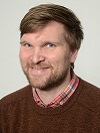
Gustav Berggren research interests span molecular design, spectroscopy and redox catalysis, with a focus on bioinorganic chemistry and chemical energy conversion. He received his PhD from Uppsala University in 2009, where he studied in the group of Prof. Stenbjörn Styring. This was followed by postdoctoral studies with Prof. Marc Fontecave and Dr. Vincent Artero at CEA Grenoble; and Prof. Britt-Marie Sjöberg at Stockholm University. In 2015 he returned to Uppsala University, where he now holds an associate professor position in Molecular Biomimetics at the Department of Chemistry – Ångström. The group is also part of the Swedish Consortium for Artificial Photosynthesis (CAP). Current main research lines include hydrogenase studies as well as the development of biomimetic (electro-)catalysts for hydrogen production and developing biohybrid hydrogen-production systems.
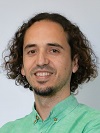
Jesús Campos is a CSIC tenured scientist at the Institute for Chemical Research at Sevilla since 2017, where he leads a research group on organometallic chemistry and homogeneous catalysis with a strong focus on unusual cooperative processes. He studied Chemistry at the University of Sevilla and moved to the University of Manchester to work under the guidance of Prof. John D. Sutherland (MPhil, 2008). Back to Spain he joined the group of Prof. Ernesto Carmona to work on fundamental organometallic chemistry (2012), spending a visiting stay with Prof. Maurice Brookhart (University of North Carolina, USA, 2010). He returned to the USA as a postdoctoral researcher joining the group of Prof. Robert H. Crabtree at Yale University to work in green catalysis and energy-related transformations (2013-2014). As a Talentia Postdoc Fellow he moved to the laboratories of Prof. Simon Aldridge at the University of Oxford to focus on bond activation and catalysis with main group systems (2014-2016). In 2016 he returned to Sevilla as a Marie Curie fellow and one year later obtained a permanent position at the Spanish National Research Council (CSIC) and an ERC Starting Grant from the European Research Council to develop his independent career. His research has been recognized with several awards as the Organometallics Distinguished Author Award (2023) or the Lilly Young Researcher Award (2021), and he has been appointed Fellow of the Young Academy of Spain from 2020.
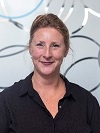
Aude Demessence is a CNRS researcher working at the Institute of Catalysis and Environment of Lyon at University of Lyon, in the Sustainable Chemistry team. She obtained her PhD in 2006 from University of Strasbourg, on magnetic and luminescent hybrid materials under the supervision of Dr. P. Rabu. Then, she spent two years at Berkeley University, USA, in the group of Prof. J. R. Long as a first postdoctoral fellow, where she started to work on porous and flexible Metal-Organic Frameworks for gas adsorption. Her second postdoctoral position was done jointly at Versailles and Paris Universities with Dr. C. Serre and Dr. C. Sanchez, to elaborate thin films of MOFs. From her recruitment by CNRS in 2010, Aude is developing her research on the formation of new clusters and anisotropic coordination polymers made of d10 coinage metals and thiolate ligands and study their catalytic activity, photoluminescence and conductivity, as well as their shaping. Aude enjoyed travelling, thus she spent two months in 2014 in Kyoto, in Prof. S. Kitagawa lab thanks to a JSPS short term fellow, she also visited for three months, in 2015, the Department of Chemistry led by Prof. R. Murugavel at IIT-Bombai, India and lately she stayed for two years in the Spanish Basque Country in Prof. S. Wuttke group with a European grant.

Rafael Gramage-Doria holds a PhD in Chemical Sciences from the University of Strasbourg (2012), where he investigated the coordination chemistry and catalytic potential of metallocyclodextrins under the supervision of Prof. Dominique Armspach and Dr. Dominique Matt. After postdoctoral periods with Prof. Joost Reek in Amsterdam and later in Nagoya with Prof. Takashi Ooi, he became a CNRS researcher in the Rennes Insitute of Chemical Sciences (UMR6226) at the University of Rennes (2015), where he obtained his Habilitation in 2019. His research activities include transition metal catalysis for fine chemicals and green chemistry applications, C–H bond functionalization, supramolecular and coordination chemistry, and supramolecular and bio-inspired metal catalysis, with a particular emphasis on the fundamental understanding of metal-catalyzed reaction mechanisms.
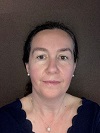
Raluca Malacea obtained her engineering degree at the Polytechnic School of Bucharest and then her doctorate in coordination chemistry with Pr. Rinaldo Poli and DR Eric Manoury at LCC Toulouse on iridium complexes derived from ferrocene phosphines. She completed two postdoctoral internships, one in Rennes with Prof. Pierre Dixneuf on olefin metathesis and another one in Toulouse at LHFA with Dr. Didier Bourissou and Prof. Montserrat Gomez on palladium complexes derived from phosphine ortho-boranes. She became a CNRS Research Fellow at the ICMUB laboratory in Dijon in 2009 where she worked on the functionalization of amino acids for PET imaging in the team of Pr. Sylvain Jugé. She is currently working with Pr. Pierre le Gendre and she is particularly interested in metal complexes with nitrogen or phosphorus ligands for catalytic or therapeutic applications.
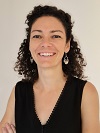
Marie Sircoglou, 41, is a lecturer at ICMMO since 2011. Originally from Marseille, she studied chemistry in Normandy (ENSICAEN). It was during an internship in organometallic catalysis at the Martin Wills laboratory in England that her interest in research was aroused. She then specialised in coordination chemistry during her doctoral work at the LHFA in Toulouse under the supervision of Didier Bourissou and Rinoi Bouhadir. Two post-doctoral experiences in the teams of Aloïs Furstner (Max Planck Institute, Germany) and Vincent Gandon (Orsay, France) enabled her to broaden her knowledge of transition metal chemistry and confirmed her interest in computational chemistry. At ICMMO, she implements and studies multi-electronic catalytic processes involving metal complexes (Fe, Mn, Co, Ru) inspired by artificial photosynthesis. She is also seeking to rationalise the cooperative role of ligands in various catalytic processes (CO2 reduction, nitrene transfer) using a computational approach.

Florence Volatron completed her graduate studies at University Paris-Saclay where she received her PhD in 2010 under the supervision of T. Mallah and L. Catala for her work on the synthesis and study of bistable nanoparticles of coordination networks. Then she joined the group of H. Perez, IRAMIS, CEA Saclay to work on oxygen reduction reaction with thiol capped platinum nanoparticles. In 2011 she went to Valencia, Spain, to work on the shaping of metal-organic frameworks on ferromagnetic substrates, in the group of E. Coronado at ICMol. She was hired as an assistant professor in 2012 at Sorbonne University in the group Polymetallic Structures of Parisian Institute of Molecular Chemistry. Her current research deals with the processing of polyoxometalates (POMs) on solid surfaces and with nanoparticles for molecular electronics and spintronics. The main part of her work is devoted to the control of the organization of the POMs as 2D assemblies or at the molecular scale. Keywords : polyoxometalates, surface chemistry, molecular electronics

